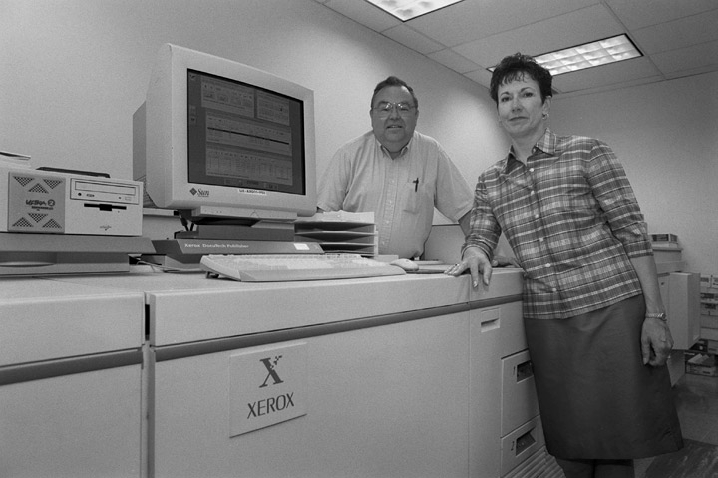
To understand the scope of services provided by Milwaukee County to its citizens, look no further than its data center.
From paychecks to subpoenas to dog licenses, Mil- waukee County’s Information Management Systems Division (IMSD) handles the information technology projects for all departments of this County located in southeastern Wisconsin.
Last year, when IMSD decided to update its aging printers, staffers began exploring ways they could make the process of generating documents more efficient.
David Chattin, operations analyst for IMSD recalls “When our time was up on our old printers, we decided it was a good time to think through how we can work even smarter with our equipment.”
Close But No Cigar
Located two miles apart, IMSD’s print shop and data center each employed its own printers-the print shop housed a printer and the data center had two printers.
The data center applications could not be printed in the print shop and the data center could not handle print shop applications.
“We asked our printer vendor to offer some solutions,” says Chattin of the selection process. “And they recommended RSA’s M.I.S. Print which turned out to be an excellent fit.”
Rochester Software Associates’ M.I.S. Print software automatically converts legacy print data streams including DJDE, Metacode and XES-to PostScript or PDF.
For IMSD, M.I.S. Print allowed the group to take LCDS data from the Amdahl mainframe and convert it into PostScript for printing on the new printers located in the division’s print shop, and in the data center.
Better Use of Equipment
Rochester Software Associates’ M.I.S. Print software automatically converts legacy print data streams including DJDE, Metacode and XES-to PostScript or PDF.
Jobs are sent from the mainframe to an RSA Channel Server, which sends the data over the network to the local or remote printer. “The data goes over a T-1 line to the graphics area where the job is printed out,” explains Chattin.
M.I.S. Print is installed as an integrated solution, converting all mainframe applications to PostScript for production on the new PostScript printers.
“This is a much better use of equipment,” notes Chattin. “In the data center, we generate almost all of our output during the night shift which meant that our printer was often sitting idle during the day.”
“Sharing the printer is perfect-the graphics group uses it during the day shifts and we use it at night-a much smarter use of resources.”
For the data center, they print nightly reports using simplex, duplex and two-up on stock ranging from three hole to colored to two- and four- part carbonless NCR paper.
Applications include retirement statements, dog and cat licenses, budget and expenditure reports, timesheets, purchasing forms and other department reports printed on a nightly, weekly and biweekly basis.
And even though these documents are being generated off-site, M.I.S. Print’s remote printer control feature enables data center managers to check the print project’s status remotely.
The printer handles special forms, checks and sysout data printing as well as serving as a backup.
Easier Reprints

“One benefit of having an M.I.S. Print enabled printer is seen in our check printing,” says Chattin. “ There’s less jamming and therefore fewer checks that have to be reprinted, but when we need to, M.I.S. Print enables us to view a document before printing. This makes it easy for operators to reprint the right checks, quickly.”
In addition to increased productivity, the new system offers faster job turnaround thanks to M.I.S. Print’s demand reprint feature in which jobs can be archived at the print server for later reprinting without time consuming delays and reprocessing at the host computer.
“Using M.I.S. Print, we’re able to retrieve a listing of processed jobs for the previous three days, then reprint selected jobs,” explains Chattin. “It allows operators to bypass the time consuming process of reprinting through SAR, and reprint ‘on the fly.’”
With total monthly volumes exceeding 500,000 images per month, Chattin and his group decided a gradual conversion would be most workable for their organization. While the conversion went smoothly, according to Chattin, he says there were a few files that required special attention.
“Our jury summons is printed out on legal-sized stock,” he explains, “It is printed on both pages and uses a number of fonts. A lot of information has to be presented in this one document. That one took some time to be converted. But RSA dug into the code and took care of it.
“RSA technicians have been very accommodating when problems came up,” he says of the project. “Response times have been prompt and their remedies effective. Technicians have always been eager to answer questions and patient in their explanations. And it’s this willingness to help out, to really be our partner in this effort that makes a difference.”